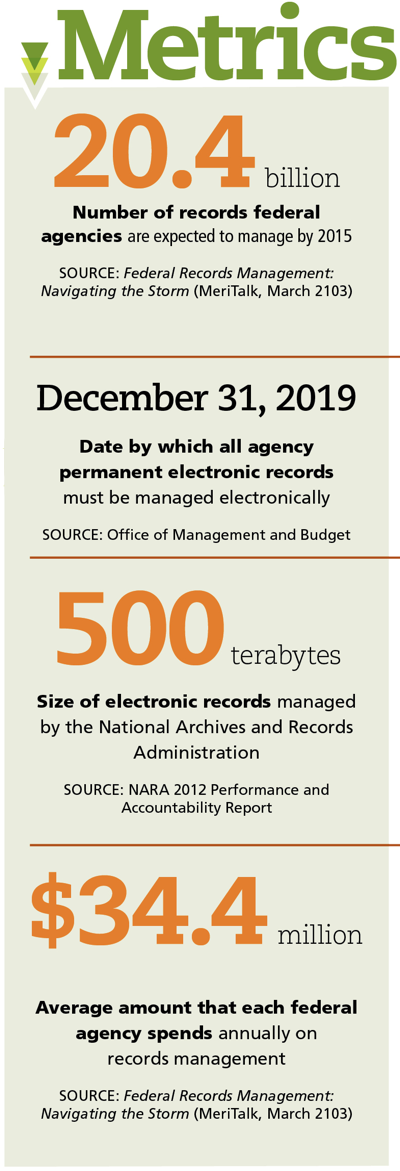How the Agricultural Marketing Service Is Improving Records Management

For the Agricultural Marketing Service, an agency of the Agriculture Department, records management is less of a technological challenge and more of a strategic one.
AMS is revamping its records management system to make it more user-friendly, implementing a strategy devised by the National Archives and Records Administration (NARA) to simplify the process, says Doug Bailey, the AMS’ CIO.
Most government agencies have gotten a handle on email, Bailey says, but many are having trouble managing other documents and unstructured information.
“We’re trying to address that challenge,” he says. “How do you organize all that content not only to ensure its preservation but also its discovery?”
AMS is implementing a “big bucket” approach established by NARA that creates five main categories, including legal, financial and mission-related files, in which to store records. The records involved include general agency correspondence, as well as office documents such as spreadsheets, presentations and Microsoft Word files. Metadata tags on each record help users find specific documents within a bucket. Some content will always be preserved in hard copy, but most business records will be kept in the electronic system.
The new approach is intended to make it easier for users to find the appropriate place for their records. The previous system included many more categories and frequently confused users, who sometimes ended up not filing their records at all, Bailey says. AMS hopes that using only five broad categories will reduce these headaches.
“If it fits one of those categories and you set one or two metadata tags, it will help us manage the content, discover it appropriately and preserve it appropriately,” Bailey adds.
While the system is changing, the technology behind it is not.
“It’s actually still the same framework in terms of the technology,” Bailey says. “We’re still using SharePoint 2010 and the records and litigation capabilities that Microsoft built into it.”
One challenge the agency faces is determining which records should be retained. If the policy is too broad, AMS will end up saving far more than it needs, but a too-narrow policy could result in failure to retain some important records.
“Truly, the electronic world is different from the paper-based world. You need a different approach to category management and document retention,” Bailey says.
Voices

“Records management is at the heart of an agency’s digital strategy. Preparing electronic recordkeeping systems to meet the rigorous records management requirements set forth by NARA is no small task.”
— Kimberly Hancher, CIO, Equal Employment Opportunity Commission

“An effective records management program is critical for federal agencies. Effectively managed records allow agencies to assess the impact of programs, to improve business processes, and to share information across the government.”
— Paul M. Wester Jr., Chief Records Officer for the U.S. Government, National Archives and Records Administration

“As formats, software and storage technologies change, it is important for agencies to have a trusted digital information system and employ preservation strategies and practices, ensuring their data is uncompromised and permanently accessible to users.”
— Richard Davis, Chief Technology Officer, Government Printing Office








